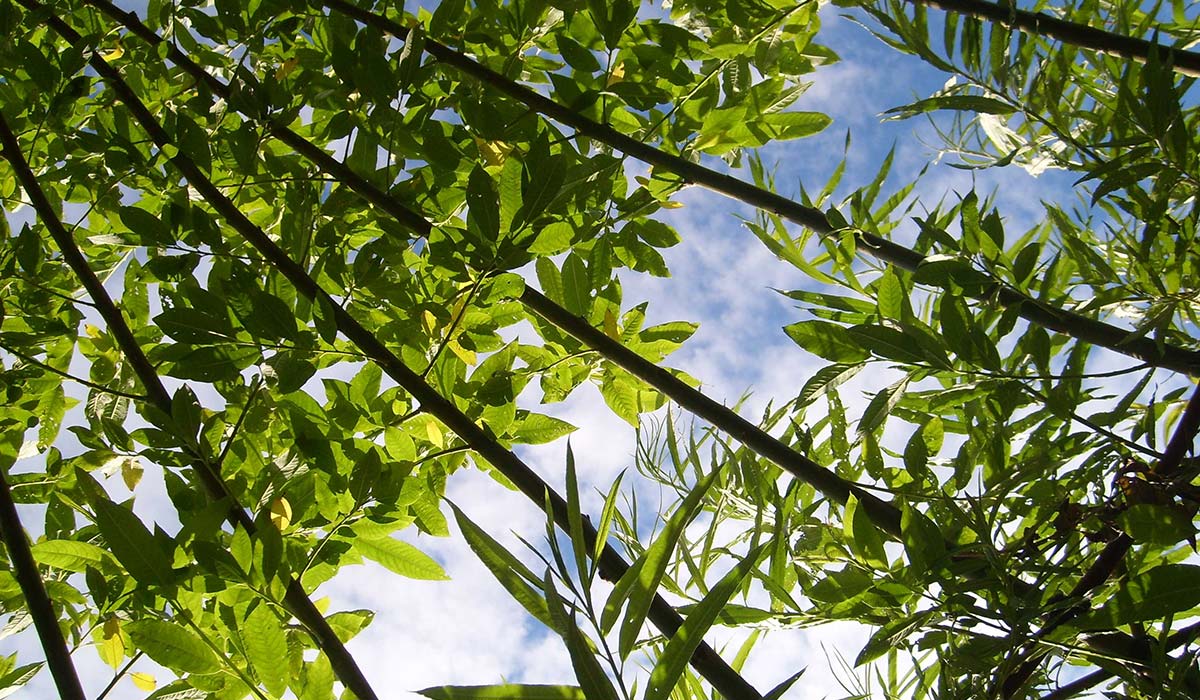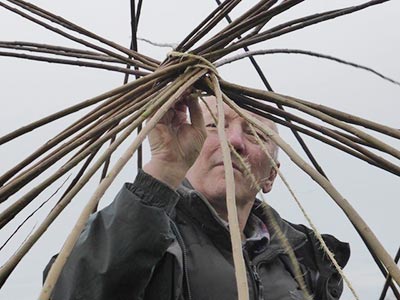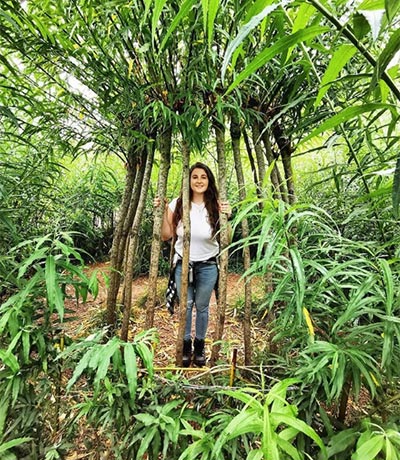
If you’ve visited Puzzlewood before you’re probably very aware of our fabulous willow maze, you or your children may even have got lost in it!
We’re very proud of the maze and feel it’s high time we introduced you to its creator, Steve Pickup of The Willow Bank, a fantastic local company that offers an array of willow screens, domes, tunnels and dens. It’s also the perfect opportunity for an insight into the wonderful craft of working with willow.

Steve, how did you get into willow craft?
I started out as a professional gardener and then ran my own smallholding where I grew organic vegetables. Unfortunately, ‘organic’ was seen as a bit weird, a dark art almost, back in the mid-eighties and selling my produce was like pushing water uphill – I was obviously a bit before my time! But then I discovered willow making. This was at a time when traditional crafts seemed to be coming back into fashion, and many were in danger of falling into obscurity. I decided to buy some willow rods, planted them in a spare field next to a river and, before I knew it, I had people knocking on my door asking for cuttings. I realised I had a business!
What is it you enjoy so much about working with willow?
It’s fast and easy to grow, sustainable and it’s a really versatile material with many applications, from traditional baskets to fencing. Plus, being a natural product it’s environmentally friendly, far better than plastic. I also love the fact that the use of willow can be traced way back to ancient history – the Romans wove baskets with willow, but pottery fragments dating back to 10,000 BC, which are imprinted with basketry patterns, are evidence of willow being used as a mould for clay vessels. As a company, Willow Bank creates all kinds of willow products, but living structures are my particular specialism.
How long did it take to create the maze at Puzzlewood?
We had a small team working there for a few weeks, it’s quite an intricate design with some great features.
And how long will it last?
Years and years! A living willow structure needs some management, it’s a bit like clipping a hedge but more regularly. You can pretty much do nothing over the summer, but once the leaves have dropped in the winter it’s a case of harvesting the rods that have grown – these can then be used for other projects.

Can anyone make a living structure?
If you can plant sticks in the ground you can grow willow and make something from it! We actually run courses that are very popular and even beginners leave with the skills to get creative.
And is willow here to stay?
Definitely, without any doubt. Willow was used in rural settings for centuries and we are now reclaiming proven traditional methods to look after the environment. As well as the willow structures we make, we also supply materials for bio-engineering. Essentially, it’s all about using living plants instead of mass-produced artificial products as an engineering solution to an environmental problem such as preventing riverbank erosion. We’re currently working on a project in Yorkshire where willow is being used to provide flooding control that will protect a populated area, whilst improving biodiversity, creating a natural habitat in which insects and birds will thrive. It’s really satisfying to know that things are coming full circle and we’re finally learning that traditional crafts have an important part to play in the world again.
If you’d like to find out about Steve’s willow courses or fancy having a living structure installed in your garden, visit The Willow Bank.







